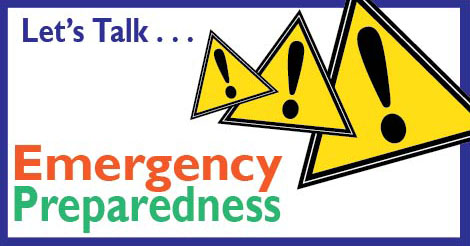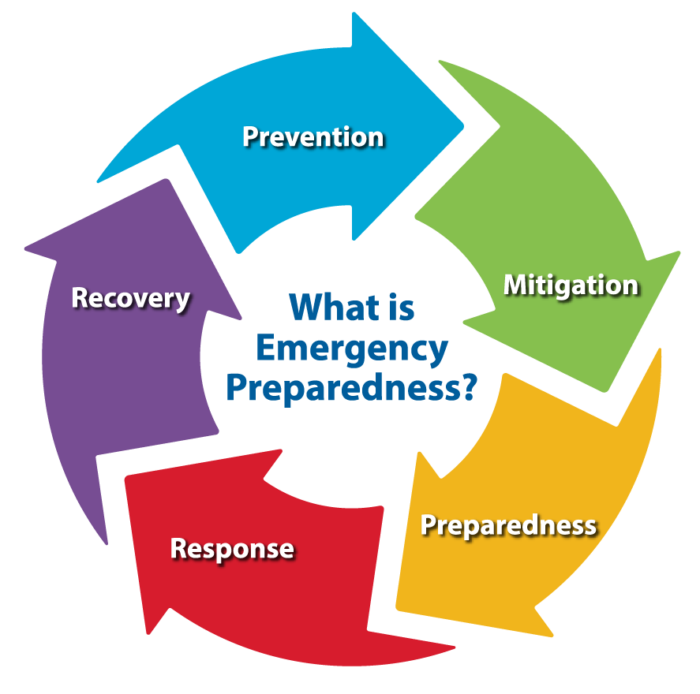
Contact: Monica L. French, 502-607-5721
FRANKFORT, Ky. (August 29, 2019) – In conjunction with National Preparedness Month, Gov. Matt Bevin has proclaimed September as Preparedness Month in Kentucky.
Kentucky Emergency Management urges Kentuckians to “BE AWARE – BE PREPARED – HAVE A PLAN – MAKE A KIT.” Visit https://www.ready.gov/september for a host of ideas throughout National Preparedness Month to promote family and community disaster and emergency planning.
Kentuckians face threats to their safety and property throughout the year; from tornadoes, flooding, straight-line winds, lightning, winter storms, and man-made hazards, to daily emergencies. Every household and every business should be prepared to face these challenges at any given time. Disasters can occur at anytime, anywhere in Kentucky.
As we have seen with devastating hurricanes and wildfires in recent years, preparedness can make the difference of saving your life or your family. Supplies such as water, non-perishable food, flashlights and batteries, radios and first aid kits are easy to store, and can be lifesavers when a crisis hits. A communication plan with family, friends and neighbors is also very important.
Michael Dossett, director of Kentucky Emergency Management (KYEM) stated, “During National Preparedness Month, the theme “Prepared, Not Scared. Be Ready for Disasters.” is a great opportunity to remind our family, friends and neighbors of the importance of planning ahead. Dossett suggested activities, including: “make a plan and build a kit, save early for possible disaster costs, assist youth in preparedness and get involved with your community’s preparedness.”

PLANNING FOR A DISASTER: “BE AWARE – BE PREPARED – HAVE A PLAN”
Be Aware:
- Stay informed about risks in your communities and monitor weather forecasts.
- Own and monitor a battery backed-up or crank-type NOAA Weather Alert Radio. During threatening weather, stay tuned to your local broadcast stations.
- Discuss conditions with family members and know their locations during dangerous weather.
Be Prepared:
- Discuss known risks with family members and neighbors.
- Develop and review your emergency plan periodically and update of necessary.
- Assemble an emergency kit(s) and refresh periodically. A kit should have enough food, water and medications for each family member for five days.
- Drill: practice your plan with household members.
Have a plan:
- Share your plan with others, including friends or relatives in another region or even another state
- Medications – prepare a list of all prescription drugs.
- Utilities – Written instructions for how to turn off electricity, gas and water; if authorities advise you to do so. (Remember, you’ll need a professional to turn them back on.)
- Shelter – Identify safe locations within and outside your residence.
- Contacts – Written contact information for relatives, neighbors, utility companies, employers/employees and local emergency contact telephone numbers.
- Evacuate – Predetermine evacuation routes. Identify where you could go if told to evacuate. Choose several places, such as a friend or relative’s home in another town, a motel or shelter.
- Children – Make backup plans for children in case you (or they) can’t get home in an emergency.
- Vehicles – Keep jumper cables in all vehicles at all times.
- Maintain at least a half tank of fuel in vehicles.
- Move vehicles away from under trees during possible wind events.
- Keep an emergency kit in all vehicles.
- During winter months, keep a blanket and bag of kitty litter in the trunk.
- Medications – prepare a list of all prescription drugs.
- Pets – have at least a 3 day supply of food and water for each pet. Have carriers, a collar or harness with ID tag, rabies tag and a leash; familiar items such as treats, toys and bedding can help reduce stress for your pet.
- Share your plan with others, including friends or relatives in another region or state.
Make an emergency kit:
- First aid kit and essential medications (to include prescription medicines).
- Canned food and can opener
- At least three gallons of water per person
- Protective clothing, rainwear and bedding or sleeping bags
- Battery or crank powered radio, flashlight and extra batteries or crank recharging stations that are capable of recharging cell phones, tablets, laptops, etc.
- Waterproof matches and candles
- Local phone book
- Special items for infants, elderly or disabled family members
- Extra set of car keys
- Cash – as much as you can afford
For additional preparedness information, visit www.ready.gov and Kentucky Emergency Management at www.kyem.ky.gov. Follow @KentuckyEM on Twitter, and like us on Facebook.
See Gov. Bevin’s proclamation at: https://kyem.ky.gov/Documents/SeptemberNationalPreparednessMonthProclamation.pdf
Leave a Reply